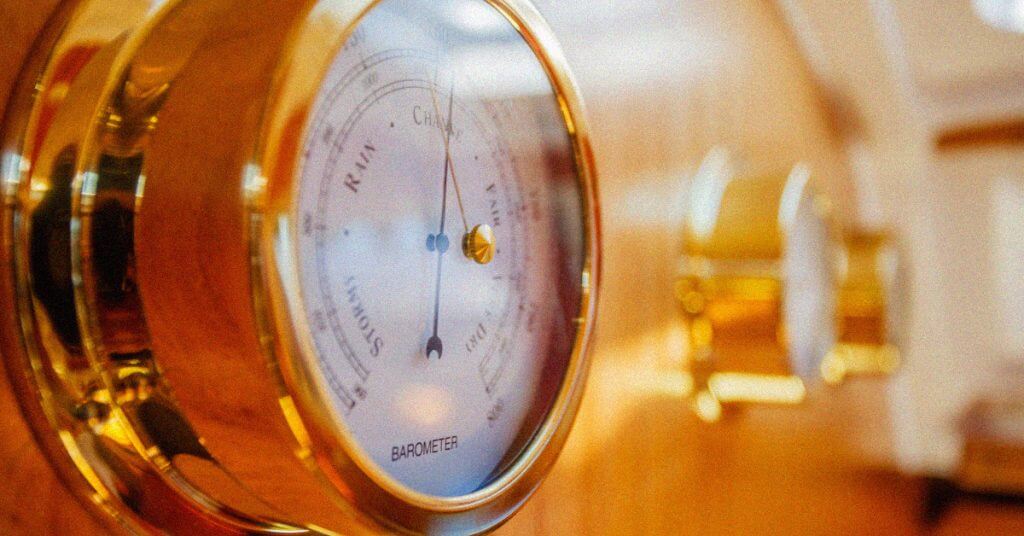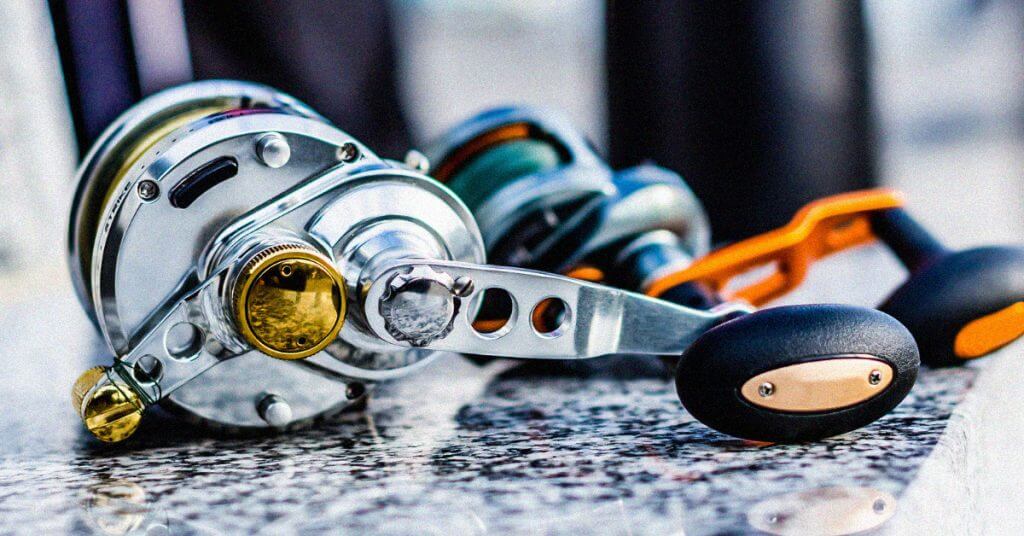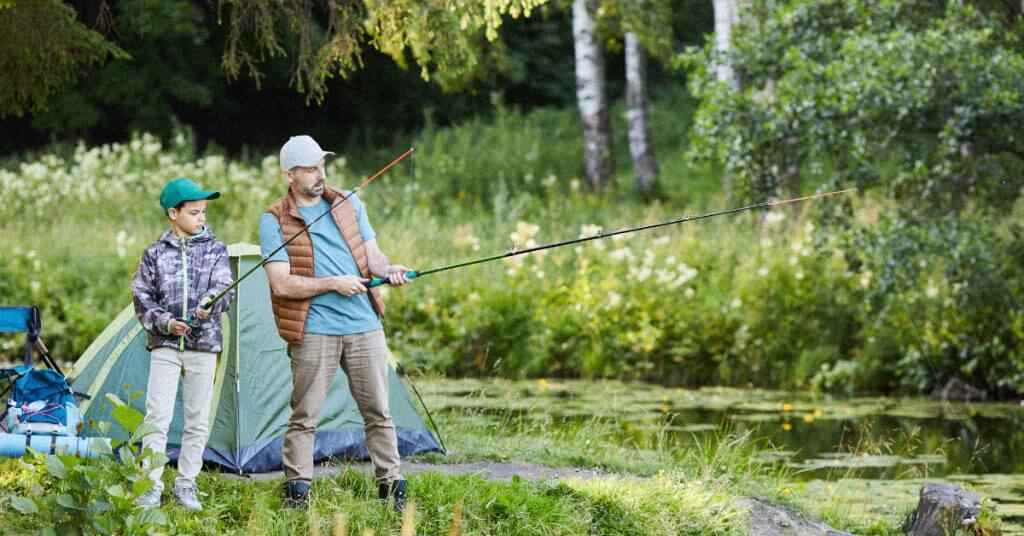If you’re a new bass angler, you might be wondering what rod length is best for your fishing needs.
The truth is that the best rod length for bass fishing will depend on several factors, including your height and the type of lures or techniques you want to use.
Generally speaking, anglers should take their height into consideration.
Individuals who are below 5′ should opt for a 6’6″ or 7′ rod, while taller fishermen can benefit from using rods that reach 7’6″ or 8′.
Let’s take a look at how to choose the perfect rod length for bass fishing.
YourBassGuy.com writer Wes Littlefield explains how to choose the best rod length for bass fishing in the YouTube video above!
Table of Contents
How to Choose the Best Rod Length for Your Bass Fishing Situation
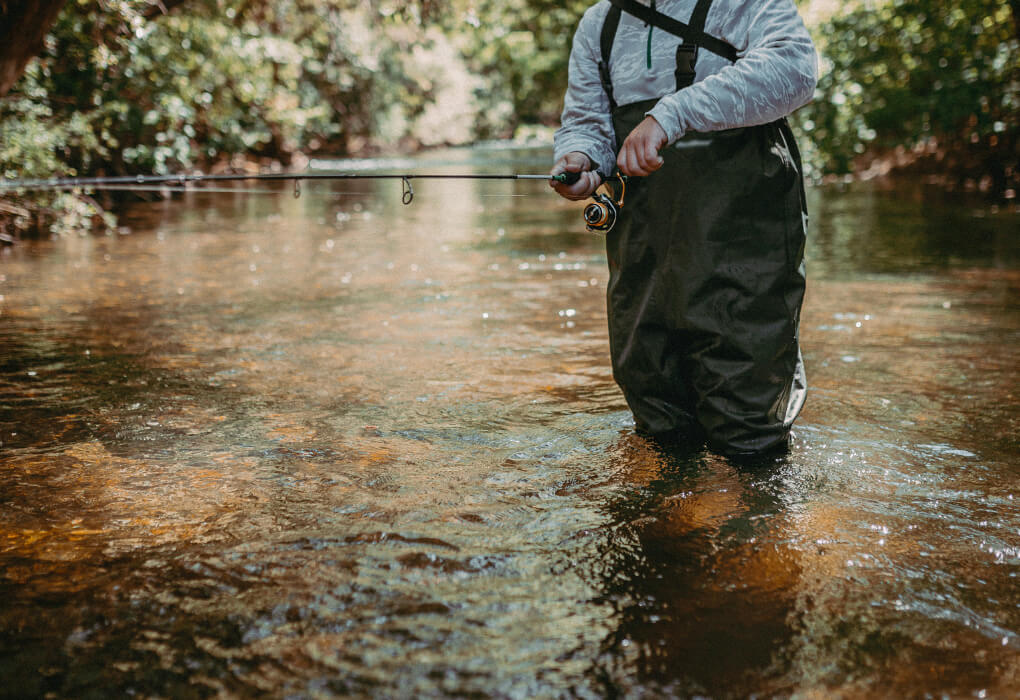
Each rod length has its pros and cons. In some instances, you need a longer rod, and others, you need a shorter rod.
This is why so many options exist, but which is best for your situation?
Longer rod (7’+) pros:
- Better leverage for battling fish
- Long casting distance
- More accurate at longer distances
- Better for flipping & pitching
Longer rod cons:
- Heavier
- Difficult to handle in close quarters, such as around trees
- Not as accurate on short casts
Shorter rod (less than 6’11”) pros:
- Lighter
- Easier to handle in tight places
- More accurate on short casts
Shorter rod cons:
- Less leverage for fighting fish
- Less accurate on long casts
- Less casting distance
The sweet spot for most anglers and presentations will be a rod 7’3″ long. This length won’t be too difficult to handle in most places, and you can fish a variety of lures.
It’s important to remember that the length of the rod is only part of the equation. The power and action of the rod also play a critical role in determining which rod you should be using.
Presentation
Presentation is an important part of angling successfully. It’s how an angler presents their lure or bait to the fish they’re targeting.
This could be done by casting out and reeling back in on a straight retrieve, hopping along the bottom, working back and forth on the surface, or jigging straight up and down vertically.
The length of a rod can make it easier or more difficult to present the lure or bait in the intended manner.
An example of this would be, fishing a deep-diving crankbait that requires a longer retrieve to get down into the strike zone and would benefit from a longer rod capable of long casts.
Fishing from a seated position in a kayak is another situation where having a longer rod can help fight a fish around the front of the boat.
On the other hand, fishing a jig vertically directly beneath the boat – especially in windy conditions – is better suited for using a shorter rod.
Flipping and Pitching
| Technique | Typical Rod Length (approx.) |
| Flipping/Pitching | 7’3″ – 7’4″ |
| Flipping/Pitching Heavy Cover | 7’6″ – 7’10” |
Because you’re often pitching and flipping into heavy cover, you need what many anglers call a broomstick.
They mean you need a strong, stiff rod, such as a 7’ heavy-power fast-action rod, to winch the fish out of the brush.
Flipping and pitching are specialized rod and line handling techniques that give anglers the ability to efficiently target shallow cover from close range.
They offer a fast, quiet way to cover lots of water without spooking bass.
There are many different lures that can be used for these techniques, but the right tackle, as well as rod, is essential for optimizing your speed, distance, and stealth.
By using the right combination of rod, reel, and lure, anglers can maximize their success when flipping and pitching in shallow water.
Your Height
| Height | Rod Length |
| 5’6″ | 7’4″ or shorter |
When it comes to picking the right rod length for your height, there is no one-size-fits-all answer.
If you are shorter than 5’6″, you may find yourself struggling with a 7’6″ or larger rod, so opting for something that is more manageable in size, such as a rod 7’4″ or shorter, would be best.
Ultimately, when it comes to finding the right fit, comfort is key. There’s no point in going with a long rod if it’s difficult to maneuver or heavy, even if it seems like a fit on paper.
If it’s not comfortable, you won’t want to use it.
How Rod Length Affects Your Cast?
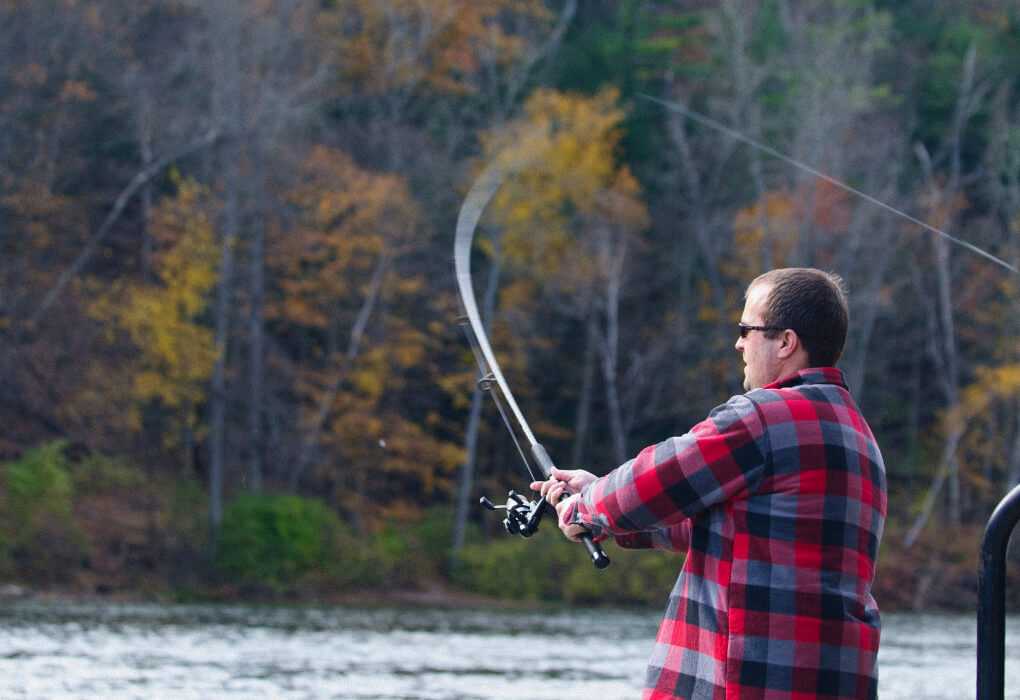
Accuracy
Shorter rods provide greater accuracy for shorter casts, as well as allow for more maneuverability, and require less energy to load the rod before casting.
This makes them ideal for situations when precision is essential. I pick up my shorter rods whenever I’m fishing in dingy or murky water or where there is heavy cover.
Longer rods (over 7 feet) can be used for longer casts that don’t require pinpoint accuracy. They are great for covering more ground but sacrifice casting accuracy.
I use a longer rod when fishing deep diving crankbaits, spinnerbaits, and topwater lures.
Distance
Long rods make long-distance casting much easier. If you’re looking to cast further than ever before, a rod that is at least 7 feet long is essential.
This will allow you to cast with greater accuracy and reach deeper depths with crankbaits. However, it’s important to remember that as the distance increases, so does the sacrifice of accuracy.
Leverage
The length of the rod is important, as it determines the leverage available to hook and reel in a fish. Shorter rods are great for fish that are directly or nearly below the angler, but longer rods are necessary when fishing farther away.
Longer rods provide increased leverage, allowing the angler to pick up more line and set the hook on distant fish with greater ease. In addition, they create larger angles which make it easier to apply upward pressure on a fish.
Comfort
Comfort should always be the number one priority when selecting a fishing rod.
Having the right length and materials to suit your body size and environment is important, but it won’t matter if you’re too uncomfortable to use the rod properly.
Figuring out what feels right for you should be at the top of your list when shopping for a new fishing rod.
To start, determine what kind of casting technique you prefer – overhead or sidearm – as well as which type of reel works best for you – spinning or baitcasting – then find rods that fit those criteria.
Once you have narrowed down a few choices, go ahead and test them out by holding each one in your hand and getting a feel for its weight and balance.
This is also a great opportunity to assess how comfortable each rod feels in your hands before making a final decision.
Best Bass Fishing Rod Length for Each Lure
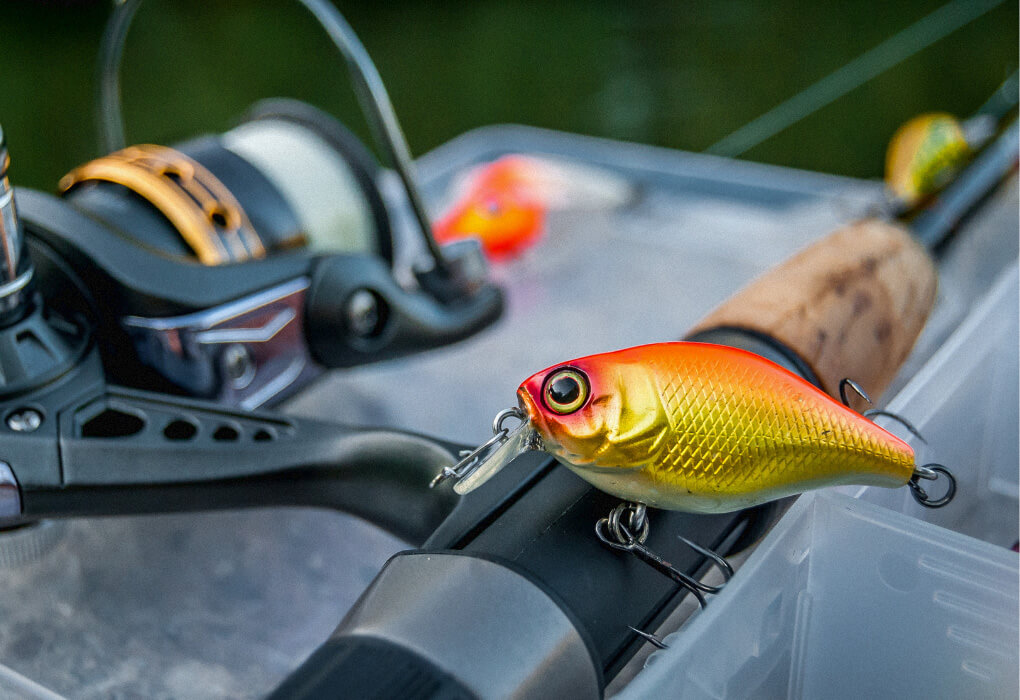
| Technique | Typical Rod Length (approx.) |
| Jerkbait | 6’8″ – 6’10” |
| Spinnerbait | 7’3″ – 7’4″ |
| Swim Jig | 7’3″ – 7’4″ |
| Carolina Rig | 7’6″ |
| Football Jig | 7’6″ |
| Drop Shot/Ned Rig | 6’10 – 7’3″ |
| Shaky Head | 7’2″ |
| Bladed Jig | 7′ – 7’3″ |
| Small Crankbaits | 6’8″ – 7′ |
| Medium Crankbaits | 7′ – 7’4″ |
| Large Crankbaits | 7’6″ – 7’10” |
Crankbaits & Lipless Crankbaits
If you’re throwing crankbaits, lipless crankbaits, or other lures with treble hooks, then you’ll want to use a 7-foot rod or longer.
This will give you enough power to cast your lure far and accurately, as well as get a good hookset and fight big fish.
Plus, the extra length helps when fighting off weeds and other obstacles in the water while you’re cranking.
Texas Rig
Generally speaking, a 7’6″ medium/heavy rod is ideal for Texas rigs.
For heavier baits, such as punching rigs, a longer rod can be beneficial for increased strength when winching fish out of the hard-to-reach areas.
For finesse techniques, such as when using a drop shot, a shorter rod can be used to help with accuracy and sensitivity.
Topwater Lures
Topwater lures are designed to be thrown close to shore or around structure in shallow water, so a shorter rod is better here.
A 6-1/2 foot rod works well because it provides just enough casting distance while still being short enough to allow for accuracy in tight quarters.
It also offers plenty of backbone when fighting fish that might be hiding near weeds or rocks.
Soft Plastics & Jerkbaits
Soft plastics and jerkbaits are often thrown into open water or deeper areas where long casts are needed.
A 7-1/2 footer gives you plenty of casting distance and allows for greater accuracy when fishing these areas since it enables you to keep your fishing line further away from weeds and other obstacles that could snag your lure.
And if the wind is blowing strongly, this extra length gives you more control over your lure while it’s in flight so that it lands exactly where you intended it to go.
Spinnerbaits & Buzzbaits
Spinnerbaits & buzzbaits are often used around cover such as docks, trees, or other structure where precision is key.
A 6-1/2 foot rod works great here because it offers good casting distance but also helps maintain control over your spinnerbait or buzzbait so that it can be worked through tight spots without getting snagged on weeds or other obstacles in the water column.
Frequently Asked Questions
What are the benefits of using a longer rod?
One benefit of using a longer rod is that it allows for longer casts, which can help you reach farther distances and cover more water.
They also provide more leverage when setting the hook, allowing you to move more line faster and keep better and more consistent pressure on the fish.
What are the benefits of using a shorter rod?
The benefits of using a shorter rod are that it allows for more accurate casting.
They also provide increased sensitivity, so you can feel every rock, weed, and bite. Shorter rods also give the experienced fisherman the ability to pick off precise targets with ease.
Final Thoughts
No two anglers are alike, so no two rods will feel exactly the same, either. Don’t be afraid to try out multiple models until you find one that fits comfortably in your hands and meets all of your needs.
In order to have the best chance at landing a big bass, length, strength, and flexibility are all important factors to consider when selecting a rod.
In short, the best rod length for bass fishing depends on personal preference and the cover you’re fishing.
Now that you know what rod length will work best for you, take a look at our article on the best rods for bass fishing to get our personal recommendations. This article should help you find the right rod for you within your budget.

